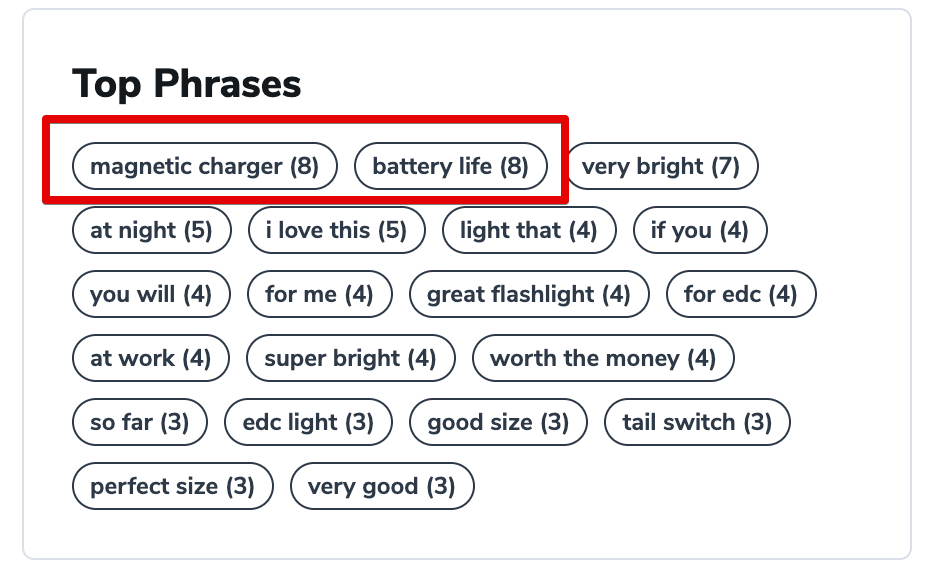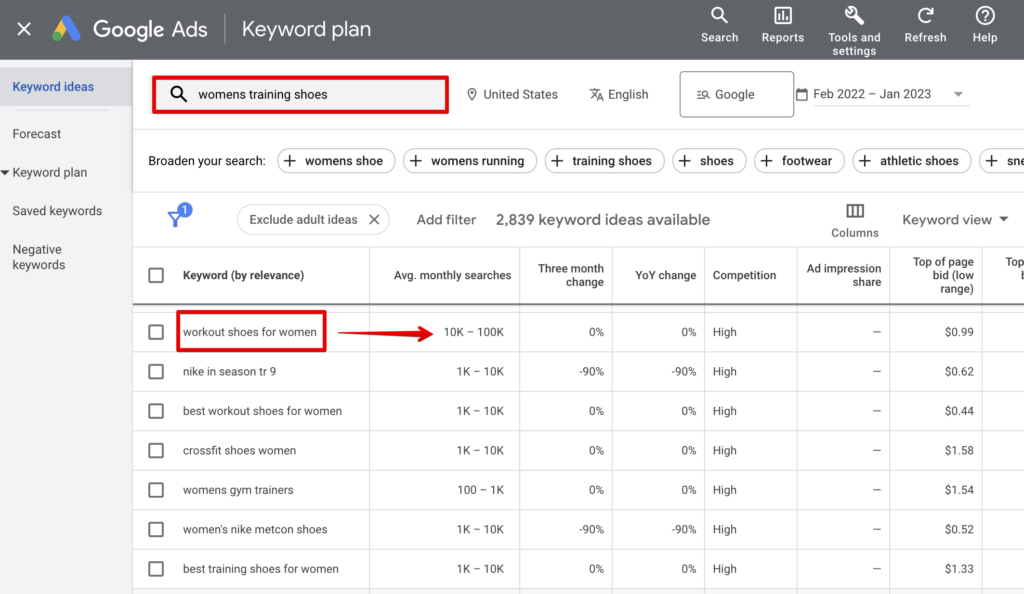If You Can’t Be Seen, You Can’t Sell: How to Dial In Your Amazon Keyword Strategy
Amazon SEO is critical to long-term success on the platform, and keyword research is an essential piece of the puzzle. Get yours running on all cylinders with this handy guide!

As an Amazon seller, you want your products to be easily found by potential customers. But with millions of products listed on Amazon, it can be challenging to get your product noticed. This is where cutting-edge keyword research comes in.
In this blog post, we will provide you with tips and tools to help you conduct effective Amazon keyword research. By the end, you will have a better understanding of how to optimize your product listings to increase your product’s visibility and sales.
What Is Keyword Research?
Keyword research is the process of identifying the words and phrases that potential customers use to search for products on Amazon. Understanding the terms and phrases that customers use to seek out products on Amazon is essential for success. Through keyword research, you can significantly improve your product exposure by ensuring it appears when potential buyers search relevant queries – maximizing sales opportunities!
Understanding the power of keyword research is essential for any Amazon seller. Through leveraging carefully crafted search terms, you can skyrocket your product rankings and attract more customers! It is an essential part of Amazon SEO (search engine optimization) and is something that all Amazon sellers should pay close attention to.
Making Amazon’s Robots Happy
Amazon uses a search and ranking algorithm to determine the order in which products appear in search results. The algorithm is designed to provide customers with the most relevant and helpful products based on their search queries.
When a customer enters a search term into Amazon’s search bar, the algorithm goes to work, searching through millions of product listings to find the most relevant and helpful products for that search term.
Recently, Amazon ditched its A9 algorithm in favor of the new A10 algorithm. It is said to give more weight to buyer searches. Amazon’s A9 tended to direct shoppers to products that were already successful, regardless of their specific relevance.
Above all, Amazon’s algorithm considers the relevance of a product’s keywords. That’s why when you’re optimizing your product listings, you’ll want to include relevant and high-traffic keywords in your product title, bullet points, and description. You DO NOT want to simply stuff them in the listing. Instead, it’s important to use keywords in a way that’s natural and customer-focused.
How Do Keywords Determine Your Amazon Product Ranking?
When a customer types a search query into Amazon’s search bar, the algorithm scans through millions of product listings to identify the products that are most relevant and useful for that query. To achieve this, the algorithm matches the keywords used in the customer’s search query with the product listings that are most likely to satisfy their requirements.
Amazon’s algorithm “looks” at a product’s keywords in a number of locations, including the product title, bullet points, and description. The algorithm checks for the presence of closely associated, high-traffic keywords to determine a product’s relevance to the customer’s search query.
Yes, your product listing should provide a clear and concise description of your product. However, it’s absolutely critical that it should also include the keywords that shoppers are using in their search queries.
With Amazon’s New A10 Algorithm, Relevancy is Everything
Now that relevancy is the name of the game, for Amazon sellers, it’s more important than ever that you match your keywords to the search terms that shoppers are using.
Here are several effective ways for Amazon sellers to identify the most relevant keywords for their products:
Amazon’s Own Auto-Suggest
You’re selling on Amazon. Why not start there? Simply by beginning to type in the search bar, Amazon’s own auto-suggest feature shows you the related search terms that customers commonly use when searching for products similar to yours. Try different combinations of keywords to identify phrases that you haven’t yet thought of.
Keyword Research Tools
There’s no lack of SaaS (Software as a Service) tools out there on the marketplace. Many of them have free trial (or reduced capability) versions that you test drive. Keyword research tools like Google Keyword Planner, SEMrush, and Helium 10 will help you identify popular and relevant keywords for your product.

Customer Reviews
This is another easy one. Why not go right to the consumer to find out how THEY are searching for your product. Analyzing customer reviews of your product can help you identify the specific terms that shoppers use to describe your product and the features they value the most. You can then use the same vocabulary to reach out to those shoppers.
The above screenshot shows that according to collated data from their Amazon product reviews, these shoppers looking for a small bright flashlight are MOST concerned about “magnetic charging” and “battery life.”
Competitor Analysis
Selling on Amazon is a competition. Make sure that you take the time to analyze the product listings and ads of the top sellers. By comparing the top three or four, you’ll quickly see commonalities. It’s a good idea to include the repeating keywords in your own product listings.
PPC Data
If you’re selling on Amazon, you’re almost certainly using pay per click advertising. Here’s where you can put a little of the money you’ve spent on advertising back in your pocket! Analyzing the data from your PPC campaigns can help you identify the keywords that are driving the most traffic and sales for your product.
Amazon Keyword Research Best Practices
Long-Tail Keywords for the Win
Trying to rank for a keyword such as “dog bowl” might be challenging. But, if you’re selling a “heated, double-walled, stainless steel dog bowl,” that’s the kind of long-tail keyword phrase that’s going to significantly reduce the competition.
Long-tail keywords are longer, more specific phrases that customers use to search for products. Though they typically have lower search volume, they are much more relevant to your product and because of that, can help you reach a more targeted audience.
Don’t Forget That You’re Writing for Humans
Yes, it’s important to include all the relevant keywords in your product listing. That doesn’t mean that you should “keyword stuff.” That means cramming so many keywords in an Amazon product listing that it feels unnatural. The increased policing of content produced by artificial intelligence can easily end up impacting your search ranking.
Be Creative with Keyword Variations
Your keyword research will probably show the different ways that shoppers refer to the same product. Use variations of keywords to improve the natural flow of your product listing. For example, if your product is a “women’s crossfit shoe,” use variations such as “women’s athletic shoes,” or “women’s training shoe.”
Keyword Optimization is a Moving Target
Keyword research needs to be an ongoing process. Customer demand is often driven by social trends. That’s why it’s important to continuously optimize your keywords to stay up-to-date with the latest trends and customer behavior on Amazon.

A Selection of Amazon Keyword Research Tools
Jungle Scout
Jungle Scout is a popular tool for Amazon keyword research that provides insights into keyword trends and search volumes. It offers a variety of features, including a product database, and listing optimization tips.
Helium 10
Helium 10 is another popular tool for Amazon keyword research that offers a suite of features for Amazon sellers. It includes a keyword research tool, listing optimization tool, review tool, and product research tool.
MerchantWords
MerchantWords is a keyword research tool specifically designed for Amazon sellers. It offers a database of over 1 billion keywords and provides insights into search volume, competition, and trends.
SEMrush Keyword Tool
SEMrush filters through 23 billion keywords to allow you to enter any keyword, and get millions of keyword suggestions organized by groups and subgroups. Use filters to sort question-based keywords, and organize keywords by word count, search volume, searcher intent, keyword difficulty, CPC, competitive density, and other metrics.

Google Keyword Planner
What does Google know about selling on Amazon? Plenty!
Google is a digital advertising heavyweight. It would be silly not to take advantage of their knowledge base. While not specifically designed for Amazon, Google Keyword Planner is a powerful keyword research tool that can be used to identify relevant and high-traffic keywords for Amazon product listings.
In the above screenshot you can quickly see that not using “workout shoes for women” would mean missing out on almost 100,000 searches each month!
Future Proof Your Keyword Strategy
There are a lot of variations of the phrase, “you can’t improve what you don’t measure.” In order to future proof your ongoing Amazon keyword strategies, you need some way of keeping score.
Here are the top 3 tips for measuring the success of your keyword strategy on Amazon:
1. Analyze Your Search Rankings
An effective keyword strategy can be reflected in your search rankings. See how high you appear in results for relevant, sought-after keywords to measure success and identify areas of improvement. An improved ranking is the ultimate indicator that all your hard work with finding those perfect phrases is paying off!
2. Sales Needs to be a Starting Point
To measure the success of your keyword strategy, it’s important to track how sales for your product fluctuate over time and match them with changes in keywords. If you see a positive boost in sales after optimizing key phrases on your product listing, then this is an indication that there are great results from using the targeted words.
3. It Comes Down to Customer Behavior
Uncovering what your customers think about your product is the key to a successful keyword strategy. Look beyond website metrics and into customer reviews, feedback and questions – are they using similar language or terms? If so, it’s likely that you’ve nailed down the right keywords for resonating with audiences!
How Canopy Management Can Help
Whether you’re managing your Amazon PPC campaigns, or optimizing your product listings for Amazon SEO, it’s important to understand and optimize for the A10 algorithm. By identifying relevant and high-traffic keywords, and using them in a customer-focused and natural way, you can improve your product’s visibility and increase your sales on Amazon.
Canopy Management is a full-service marketing agency for Amazon and Walmart sellers. Our team consists of former Amazonians, multi-million dollar sellers, and award-winning experts. When you consider the many ways that Canopy Management can help you grow your business, you’ll see why selling on Amazon is much easier “under the Canopy”:
- Strategic Growth Planning
- Listing Copywriting Optimization
- Listing Photography
- Product Videography
- Advertising Management
- Customer Service
- Demand Side Platform (Amazon DSP)
- Amazon Posts
- Full Service Management
- Amazon Review Aggregation



